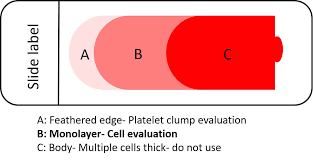A phlebotomist has just confirmed critical values on a laboratory test. Which of the following actions should the phlebotomist take when the physician's office is already closed?
Contact the physician by paging or calling right away.
Leave a message at the physician's office number.
Call the physician's office on the next business day.
Fax the results to the physician's office with a stat fax cover.
The Correct Answer is A
Choice A Reason:
Contacting the physician by paging or calling right away is the most appropriate action when critical values are confirmed on a laboratory test. Critical values are defined as those that indicate the patient is in danger of death unless treatment is initiated immediately. Immediate notification of the responsible licensed caregiver is required so that appropriate clinical action can be taken for the patient. This is a standard procedure compliant with CLIA regulation 493.1109(f) and is essential for patient safety.
Choice B Reason:
Leaving a message at the physician's office number is not an adequate response to confirmed critical values. Messages can be overlooked or not checked until the next business day, which could delay necessary urgent medical interventions.
Choice C Reason:
Calling the physician's office on the next business day is not acceptable when dealing with critical values. The urgency of critical results requires immediate action, and waiting until the next business day could result in significant harm or death to the patient.
Choice D Reason:
Faxing the results to the physician's office with a stat fax cover is not sufficient for immediate communication of critical values. While the fax may indicate urgency, there is no guarantee that the fax will be seen immediately by the physician or their staff. Direct communication through paging or calling ensures that the critical information is relayed without delay.
Nursing Test Bank
Naxlex Comprehensive Predictor Exams
Related Questions
Correct Answer is D
Explanation
Choice A reason:
Leaving a patient's record on a countertop while assisting other patients is not an acceptable HIPAA practice. Patient records contain sensitive information and should be kept secure at all times to maintain confidentiality. Leaving them in a place where unauthorized individuals could potentially access them violates HIPAA regulations.
Choice B reason:
Discarding patient contact information in the trash is a violation of HIPAA rules. Any documents containing patient information must be disposed of through secure methods, such as shredding, to ensure that the information cannot be retrieved or used improperly.
Choice C reason:
Sharing passwords with anyone, including coworkers, is against HIPAA guidelines and general security best practices. Each staff member should have a unique login credential to ensure that access can be tracked and that each person is accountable for their actions within the system.
Choice D reason:
Discussing patient information with an assisting coworker is acceptable under HIPAA, provided that the coworker has a legitimate need to know the information for treatment, payment, or healthcare operations purposes. This type of sharing is necessary for collaborative care and is permitted as long as it is done in a manner that protects the patient's privacy.
Correct Answer is D
Explanation
Choice A reason:
Covering a quarter of the slide is not an acceptable criterion for the quality of a peripheral blood smear. The smear should be spread across the slide in a manner that allows for proper examination under a microscope, and covering only a quarter of the slide would not provide enough area for an adequate assessment.
Choice B reason:
Having a well-defined edge is not specifically indicative of the quality of a peripheral blood smear. While the edges should be clean to allow for clear viewing of the cells at the margins, the quality is more accurately determined by the distribution and integrity of the cells on the slide.
Choice C reason:
Covering the entire slide is also not a criterion for a quality peripheral blood smear. In fact, if the blood covers the entire slide, it may be too thick to allow for proper cell differentiation and examination. A proper smear should have a gradient of cell distribution, ending with a feathered edge.
Choice D reason:
A feathered edge is the correct criterion for a quality peripheral blood smear. The feathered edge is the thinnest part of the smear and is where the cells are ideally distributed in a single layer, which is optimal for microscopic examination. This allows for the best visualization of cell morphology and is essential for accurate diagnosis.

Whether you are a student looking to ace your exams or a practicing nurse seeking to enhance your expertise , our nursing education contents will empower you with the confidence and competence to make a difference in the lives of patients and become a respected leader in the healthcare field.
Visit Naxlex, invest in your future and unlock endless possibilities with our unparalleled nursing education contents today
Report Wrong Answer on the Current Question
Do you disagree with the answer? If yes, what is your expected answer? Explain.
Kindly be descriptive with the issue you are facing.
